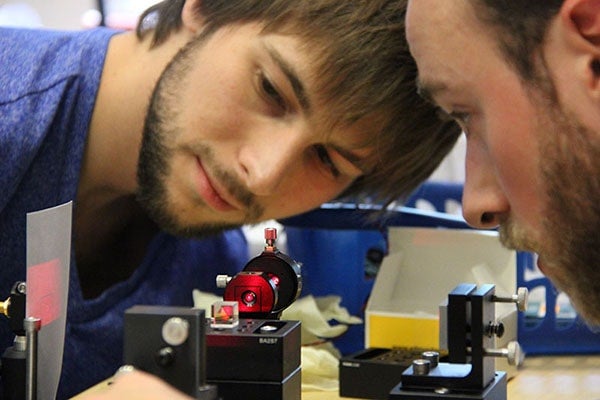
Astronomical instrumentation builders: the next generation
Published: September 3, 2013
This summer, 40 students from around the world gathered at the Dunlap Institute for Astronomy & Astrophysics for a unique introduction to designing and building astronomical instrumentation.
The week-long Dunlap Institute Summer School reflects the institute’s mission to develop the tools of astronomical discovery—spectrographs, imagers, adaptive optics systems and more. It also fulfills the institute’s mandate to train the next generation of astronomers—the individuals who will build and use those instruments to make future discoveries. (Learn more about the Dunlap Institute Summer School)
While most students were from universities in Canada and the US, some travelled from as far away as Norway, the Netherlands, Israel, Australia, Germany and Mexico. They came for a simple reason. “We can't get this at home,” said Lars Driessen, a graduate student from Radboud University Nijmegen in the Netherlands. “At home, there's no instruction in instrumentation whatsoever. There's no way to get this kind of experience.”
Lectures introduced students to principles of spectroscopy, radio astronomy, interferometry, adaptive optics and more. Labs provided them with what for many was their first experience in physically using lenses, lasers, diffraction gratings, sensors—and building something out of those components. For students already familiar with handling data, this was their first experience in handling the hardware that generates the data.
No matter what academic path the students take, the school was valuable training. Jielai Zhang, a graduate student at the U of T, said, “No matter whether I go into instrumentation or not, the knowledge I gained this week will stay with me for my entire career. It will help me in doing science, and also in influencing technology so that better science can be done.”
The roster of instructors included astronomers from the Dunlap Institute, the Department of Astronomy & Astrophysics, and from institutions across North America. While the instructors’ research expertise spans a vast range—from exoplanets to galaxies to the Cosmic Microwave Background—they are also leading experts in astronomical instrumentation and, not surprisingly, encouraged students to follow their lead.
"Instrumentation is such a good career move,” said James Lloyd, an astronomer from Cornell University who has been an invited instructor for two summers. “There's such an enormous demand for people with the skills to build astronomical instrumentation. What’s more, in astronomy, so many of the really big advances are made by an advance in technology.”
The week included a visit to the David Dunlap Observatory in Richmond Hill that was like a journey back in time. The observatory, which opened in 1935, was a gift to the U of T from Jessie Donalda Dunlap to commemorate her late husband, David Dunlap.
“The instrumentation summer school was a great success,” said Dunlap Institute Interim Director, Peter Martin. “The school is just one of the many ways that the institute is continuing the intent of the original gift, to ensure that the Dunlap name becomes synonymous with excellence in astronomy and astrophysics.”



